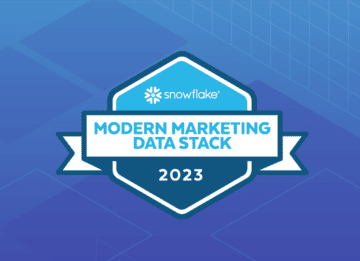
Not Like it Used to Be
Digiday’s Confession series recently interviewed an anonymous media buyer to discuss the current state of media buying for direct-to-consumer (DTC) companies.
The theme was clear: because of increased competition on the major media platforms, DTC companies can no longer rely on cheap acquisition costs to build their businesses. In another, more nuanced point, the interviewee posits that DTC companies are overly focused on one-time buyers who don’t generate sustainable ROI.
The Key to Success
The key to success for these brands, as the media buyer puts it, is “putting more and more emphasis on repeat-purchases.” To do that, brands have to rethink investing all their efforts into scaling and focus on building brand loyalty.
We couldn’t agree more. However, what the Digiday article doesn’t say is that this issue goes far beyond DTC companies. Rising CPMs, short-sighted KPIs, and decreasing marginal returns on investment are a problem for every industry. This effect just happens to be exacerbated among DTC companies that have fallen in love with the ease of use and scale of Google and large social platforms.
Creating a persistent customer base isn’t about chasing a shallow CPA—it’s about embracing the customer along their journey—from first touches, through the purchase funnel, and engaging meaningfully with personalized offers for repeat purchase.
It’s about increasing the sophistication of how the brand and the customer interact to create a mutually beneficial and symbiotic relationship with proper privacy and consent controls in place.
A Better Path Forward
So, what is a better path forward? We believe that it’s having a centralized audience strategy, where consented profiles can be distributed among media platforms.
Rather than outsourcing audiences to the black box algorithms from Facebook and Twitter, brands should start with their own first-party data assets, coupled with people-based audiences that are synced directly to media from a central point in the client’s data environments.
This gives brands the control to distribute audiences in a structured and controllable manner. The result is a brand that controls its audience strategy, as well as the test-and-learn strategy, optimization, and insights.
If you’re interested in learning more about audience strategy rooted in identity resolution and proper consent frameworks, contact Taylor Williams, Senior Director of Data Science, at taylor.williams@fullcontact.com.
Recent Blogs
-
 September 21, 2023 Discover How FullContact is Building Trusted Customer Relationships through Snowflake's Native Application Framework Customer 360, Website Recognition, Identity Resolution
September 21, 2023 Discover How FullContact is Building Trusted Customer Relationships through Snowflake's Native Application Framework Customer 360, Website Recognition, Identity Resolution -
 September 20, 2023 Transform Your Customer Experience with FullContact Customer Recognition and Boost Your Conversions Website Recognition, Identity Resolution
September 20, 2023 Transform Your Customer Experience with FullContact Customer Recognition and Boost Your Conversions Website Recognition, Identity Resolution -
 September 14, 2023 FullContact Recognized as a Leader in Snowflake’s Modern Marketing Data Stack Report FullContact News, Partnership
September 14, 2023 FullContact Recognized as a Leader in Snowflake’s Modern Marketing Data Stack Report FullContact News, Partnership